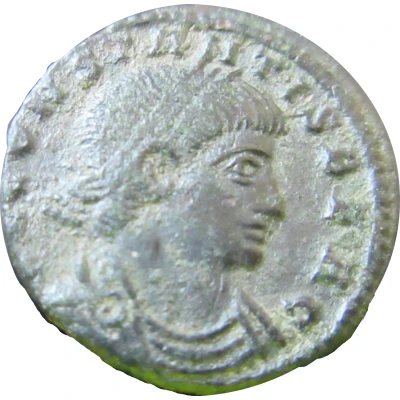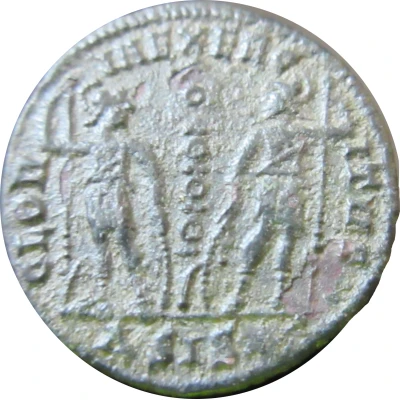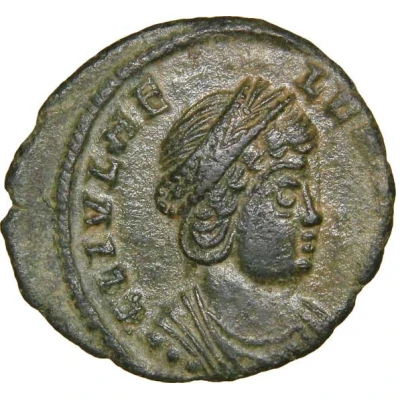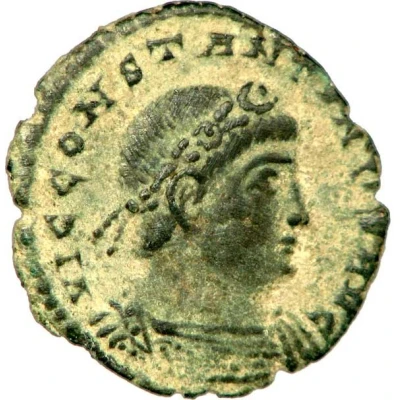
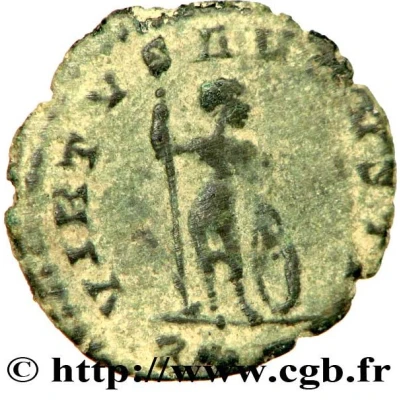

© CGB
Follis - Constantinus II VIRTVS AVGVSTI; Roma
| Bronze | 1.06 g | 16 mm |
| Issuer | Rome › Roman Empire (27 BC - 395 AD) |
|---|---|
| Emperor | Constantine II (337-340) |
| Type | Standard circulation coin |
| Years | 337-339 |
| Value | Follis (1⁄180) |
| Currency | Solidus, Reform of Constantine (AD 310/324 – 395) |
| Composition | Bronze |
| Weight | 1.06 g |
| Diameter | 16 mm |
| Shape | Round (irregular) |
| Technique | Hammered |
| Demonetized | Yes |
| Updated | 2024-10-04 |
| Numista | N#37486 |
|---|---|
| Rarity index | 85% |
Reverse
The Emperor in military garb, standing right, holding a spear in his right hand and a shield in his left.
Script: Latin
Lettering:
VIRTVS AVGVSTI
R*P
Interesting fact
The Follis coinage was introduced by Emperor Diocletian in 294 AD as a replacement for the debased Antoninianus, and it was the main denomination of the Roman Empire during the 4th century. The Follis coin was made of bronze and had a distinctive large module, which made it easily recognizable. The coin's design featured the emperor's bust on the obverse and various gods, goddesses, and personifications on the reverse. In this particular coin, the reverse features the personification of Virtus Augusti (the Virtue of the Emperor) standing left, holding a spear and a shield, with the legend VIRTVS AVGVSTI around. It's interesting to note that the Follis coinage was an attempt by the Roman Empire to restore the value of its currency, which had been debased by excessive minting of coins during the 3rd century. The Follis coin was introduced with a new system of weights and measures, and it was meant to be a more stable and reliable currency. Despite these efforts, the Roman Empire's economy continued to struggle, and the Follis coinage eventually became devalued as well.
